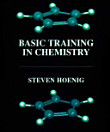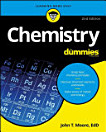General Chemistry
આ ઇ-પુસ્તક વિશે
When it was first published, this first-year chemistry text revolutionized the teaching of chemistry by presenting it in terms of unifying principles instead of as a body of unrelated facts. Those principles included modern theories of atomic and molecular structure, quantum mechanics, statistical mechanics and thermodynamics. In addition, Dr. Pauling attempted to correlate the theories with descriptive chemistry, the observed properties of substances, to introduce the student to the multitude of chemical substances and their properties.
In this extensively revised and updated third edition, the Nobel Prize–winning author maintains an excellent balance between theoretical and descriptive material, although the amount of descriptive chemistry has been decreased somewhat, and the presentation of the subject, especially in relation to the nonmetals, has been revised in such a way as to permit greater correlation with the electronic structure of atoms, especially electronegativity.
The principles of quantum mechanics are discussed on the basis of the de Broglie wavelength of the electron. The quantized energy levels of a particle in a box are derived by means of a simple assumption about the relation of the de Broglie waves to the walls of the box. No attempt is made to solve the Schrodinger wave equation for other systems, but the wave functions of hydrogen-like electrons are presented and discussed in some detail, and the quantum states for other systems are also covered. Statistical mechanics is introduced before thermodynamics, and the discussion of thermodynamics is based on it. This arrangement reflects the author's belief that beginning students can understand statistical mechanics better than chemical thermodynamics.
Aimed at first-year college students who plan to major in chemistry or closely related fields, the book is written in a logical, clear and understandable style. In addition, many excellent figures are included, along with numerous problems and 75 pages of appendixes covering such topics as symmetry of molecules and crystals, hybrid bond orbitals, and magnetic properties of substances.
રેટિંગ અને રિવ્યૂ
લેખક વિશે
Linus Pauling: Two-Time Nobel Laureate
In 1985 Dover reprinted Introduction to Quantum Mechanics with Applications to Chemistry, a well-known older book by Linus Pauling and E. Bright Wilson. This book had been first published fifty years earlier and remarkably still found readers in 1985, and still does today, twenty-five years further on.
The first edition of Pauling's General Chemistry was a short book of less than 250 pages published in 1944, during World War II. Three years later, it had more than doubled in size to almost 600 pages, and the 1953 edition was over 700 pages. Fifteen years later, for the 1970 edition, it reached its final size and configuration at almost 1,000 pages ― and that is the edition which Dover reprinted in 1988. Dr. Pauling's one request at that time was that we keep the price affordable for students.
Linus Pauling is of course the only Dover author to win two Nobel prizes, for Chemistry in 1954 and for Peace in 1962; he is the only winner in history of two unshared Nobel Prizes.
In the Author's Own Words:
"Do unto others 20% better than you would expect them to do unto you, to correct for subjective error."
"The way to get good ideas is to get lots of ideas, and throw the bad ones away."
"Facts are the air of scientists. Without them you can never fly." — Linus Pauling
Critical Acclaim for General Chemistry:





